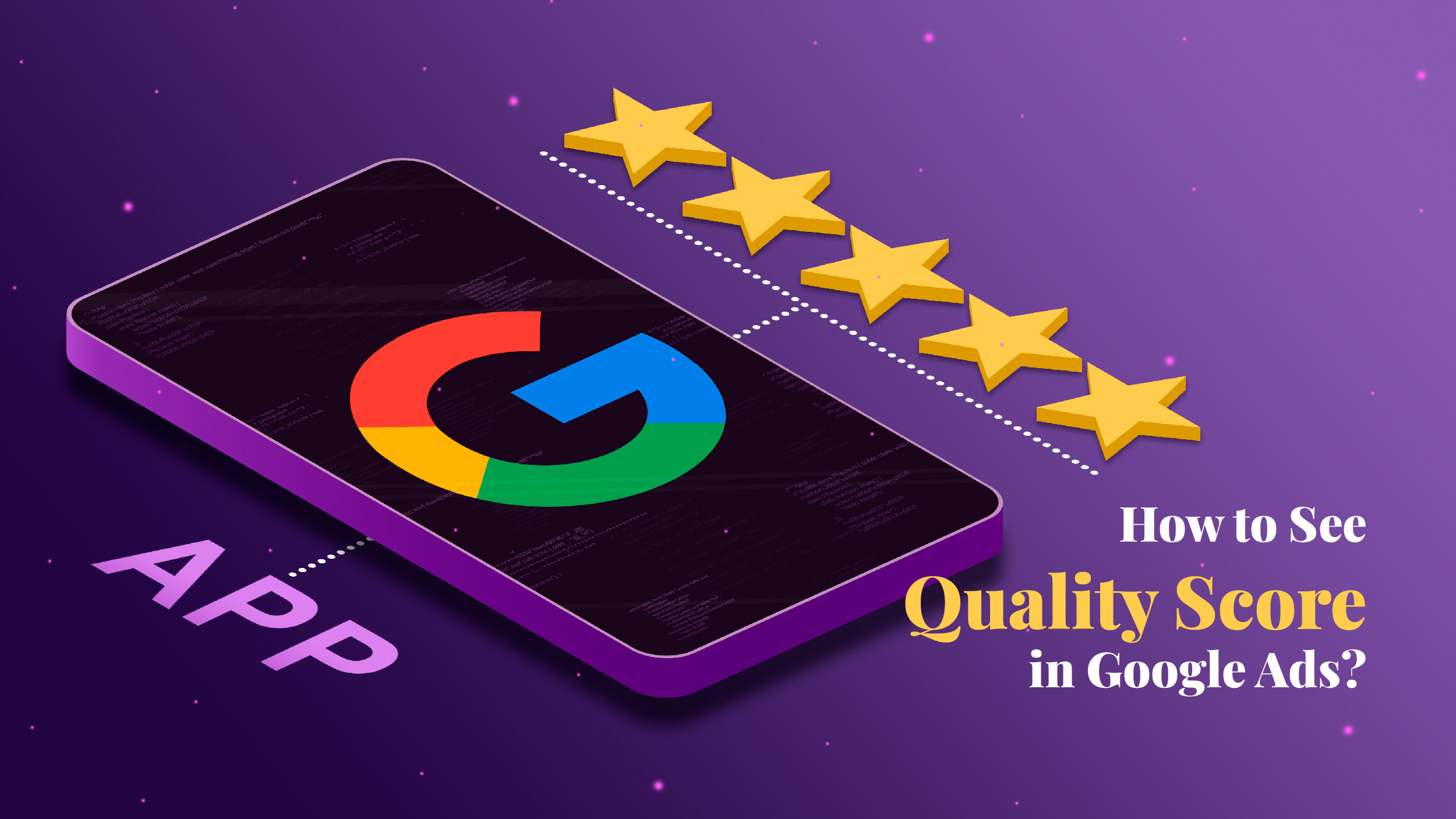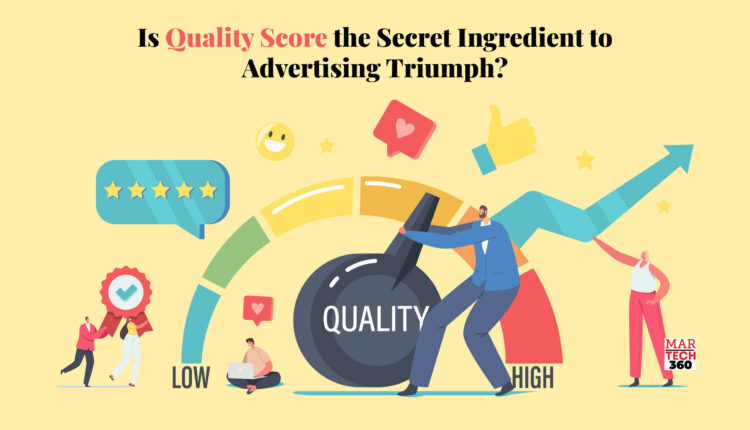Have you ever heard the whisper of Google’s discerning gaze upon your ads?
The eternal debates of Coke vs. Pepsi, ketchup vs. mustard, and caring about Quality Score vs. ignoring it have stood the test of time.
Your rating quality score appears in Google Ads. It serves as a diagnostic tool for identifying how the user experience is impacted by adverts for particular keywords. You can use it to determine which aspects of your campaign need to be improved.
It also reveals how your ad quality stacks up against those of other advertisers. A higher quality score demonstrates that your landing page and advertisement are more pertinent and helpful to visitors’ search queries.
Unfamiliar with the concept of quality score? Let’s go over a quality score’s definition, and how to raise it for your upcoming campaign.
What is Google Ads Quality Score?
Google Ads uses a measurement tool called Quality Score to let advertisers know how likely it is that their campaign will be successful. Google rates campaigns in three categories—keywords, ads, and landing pages—on a scale of 1 to 10. Advertisers can try to enhance aspects of their campaign that could raise their Ad Rank using this Google estimate.
According to studies, when assessing your ads, Google gives varying weights to different parts of the quality score. quality score is more influenced by the landing page experience and expected click-through rate than by the relevancy of the ad.
Quality Score vs. Ad Rank: The Dynamic Duo of Google Ads Performance
It’s simple to mix up Quality Score with Ad Rank. They both appear to be Google’s methods for assessing your campaigns. Despite being connected, they are not the same.
Google provides advertisers with a quality score as a tool to help them with their campaigns. quality score instructs advertisers on how to modify their campaigns in response to the evaluation of keywords, advertising, and landing sites.
The placement of your ad on search engine results pages (SERP) is determined by Ad Rank, which is Google’s method of factoring in a lot more campaign-related information. As with quality score, Google does consider the keyword, ad, and landing page experience while determining Ad Rank.
How to Improve Quality Score Google Ads?
There are many moving aspects to quality scores, as we have now learned. The results won’t appear right away after making a few changes at the ad group or keyword level.
An analysis is required for the ensuing methods for raising quality scores. Decide your present level of success by going through each phase. Improve the areas that can be improved, and then watch how these modifications affect the quality score over time.
-
Build a Strong Foundation With an Effective Campaign, Ad Group, and Keyword Structure
Utilize as many ad groups as necessary while organizing campaigns and ad groups. Only incorporate closely related keywords into each ad group. This will allow for improved keyword-tailoring of the advertising within a specific ad group. Granular setups provide various advantages for optimization, but the quality score is also quite dependent on them.
Because it would be more difficult to tailor the advertising to numerous keywords inside one ad group, choosing a less granular structure will immediately decrease ad relevance and CTR.
-
Elevate Google Ads Quality Score through Relevant and Compelling Ad Copy
Write pertinent and persuading ad copy after the previous stage. In the headline, description, and URL slug of an advertisement, use the top-performing keywords inside the ad group. These are the key two advantages of doing so:
- Searchers will be more inclined to click on the ad after seeing their search term in the ad copy, raising CTR.
- Higher ad relevance will be perceived by Google, as one of the important factors that determine the quality score.
The advertising content must seem compelling rather than robotic to be effective.
Make your ad content stand out from the pack by including keywords naturally.
-
Dynamic Headlines and Ad Format
Responsive Search Ads will be the only sort of Text Ads that can be run in 2023. Up to 15 headlines and 4 descriptions are allowed in these advertisements. The program will present a combination of up to three headlines and two descriptions, with Google choosing the most pertinent text in accordance with the search term.
Utilizing dynamic ad titles is another factor in ads that increases CTR along with
- One alternative, known as “Keyword Insertion,” basically uses the user’s search term as the headline, making the ad incredibly relevant to the search.
- With the use of location insertion, the user’s closest City, State, or Country is added to the ad copy, making it extremely relevant to them.
- The countdown is a further dynamic feature that works well with running limited-time special deals. The countdown might make things more pressing, which will raise CTR.
-
Boost Ad Impact with an Array of Relevant Ad Extensions
While ad extensions do not directly affect quality scores, they have been shown to enhance CTR.
Your ad can be expanded by using ad extensions. In addition to providing customers with more details about your company and your services, they take up more room in the search engine for your ad. The more pertinent ad extensions you use, the higher your predicted click-through rate and CTR will be.
Site links, callouts, and structured snippet extensions should always be used as a general rule as they are applicable to practically all organizations. Additionally, additional relevant ad extensions that are available to you are also better the more. Price, a special offer, a particular place, etc.
-
Enhance Google Ads Quality Score through Optimal Landing Page Experience
Your quality score is largely based on the landing page experience. The preceding steps concentrated on ad relevance, campaign, and ad group structure, and raising CTR.
However, there is still more optimization to be done to raise your quality score, thus it’s crucial to take the following into account on your landing page:
- From a keyword to an ad, and then from an ad to a landing page, the messaging remains consistent. Inspect the landing page to make sure the keywords are there and that it corresponds to the search term.
- In order to provide the searcher with exactly what they are looking for, use the greatest URL you can for each ad group.
How to See Quality Score in Google Ads?
 As far as our knowledge extends, the elusive formula of the quality score seems to rest upon the delicate interplay of three fundamental factors:
As far as our knowledge extends, the elusive formula of the quality score seems to rest upon the delicate interplay of three fundamental factors:
- Ad relevance
- Expected click-through rate (expected CTR)
- Landing page experience.
Finally, these three elements have resulted in a status of “Above average,” “Average,” or “Below average.” This assessment is primarily based on the comparison. Log into your Google Ads account and visit your keyword report to view your keyword quality score. You can type in your keywords, negative keywords, search terms, etc. in the column where your quality score is located.
According to data, Google advertising has a 2% CTR on average. Anything exceeding that is regarded as being above ordinary.
The Final Revelation of Quality Score – Myth or Game-Changer?
Digital marketers and advertisers alike continue to be fascinated by and divided by the enigmatic quality score. While some debate its importance and methodically analyze each indicator, others write it off as a mere vanity metric with little bearing on the success of a campaign. However, it is becoming more and more clear that quality score is the key to unlocking higher ad positions, reduced costs, and greater overall performance as technology advances and algorithms get more complex. In the cutthroat world of digital advertising, ignoring it completely could turn out to be a squandered opportunity.
Let’s not undervalue the power of quality score as we traverse this dynamic digital environment and embrace its ability to take our efforts to new heights. Keep in mind that quality will always be paramount in the pursuit of advertising success.


Comments are closed.